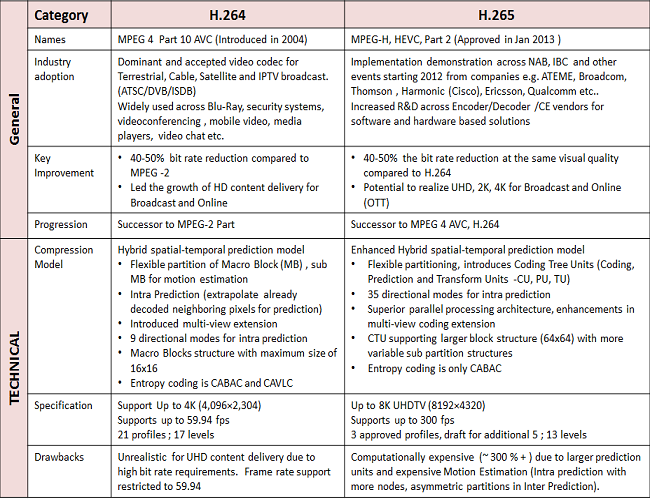H.265 vs H.264
Technically, both HEVC (H.265) and H.264 (MPEG-4 AVC) are video compression formats designated to deliver HD resolution videos. To make comparison of these two decodes, we will break it down into several sections as follows :
H.265 Overview
H.265 has been rumored for a very long time. Eventually, it has been proved and would be released in 2014. As a brand new stand code, H.265 is completely strange to lots of people. Before diving into its benefits, it is important for us to have an understanding of “what” H.265 is. Basically, H.265 is a more efficient encoding standard designed to succeed H.264. As a High Efficiency Video Coding (HEVC), H.265 is able to support video files of 4K and even up to 8K resolutions at half the currently used bitrate. So far, some dominant video streaming services like Netflix has decided to use H.265 to stream HD 1080p and 4K videos with approximately 50% bandwidth savings (at the same video quality). With H.265, we can enjoy HD videos without exceeding the bandwidth cap. Besides, it is no longer a dream to do real 4K video resolution with smart phones without losing massive quality even at low bitrates.
Differences between H.265 and H.264
H.264 (MPEG-4 AVC) has been here for quite a long time. It is one of the most popular codecs. It is specially developed for high definition systems such as HDTV, Blu-ray, HD DVD and low resolution media handy devices such as Apple iPod and Sony PSP. The greatest advantage of H.264 is that, it can encode HD video files with approximately 3 times fewer bits than comparable MPEG-2 encoders. However, since consumers’ demand for higher resolution such as 4K and 8K is on the rise day by day, the need for more efficient video streaming methods is more apparent than ever. Unluckily, H.264 is inaptitude for the delivering such high resolution. Thankfully, there’s a new kid on the block - the fresh H.265 codec. When asked what are the differences between H.264 and H.265, we can get the answers by looking into the advantages of H.265 over H.264 as below :
1.It is approximate 2X as effective as H.264
2. Reduces file size up to 50% with the same quality
3. Supports resolution up to 7680 × 4320 (8K)
4. Reduces video noise and increases dynamic range
5. Extend far greater video quality experience compared to H.264 encoded sequence at same bitrate.
To know more about the key differences between H.265 (HEVC) and H.264 (MPEG 4 AVC), please feel free to read through the table as below:


Leave a Reply